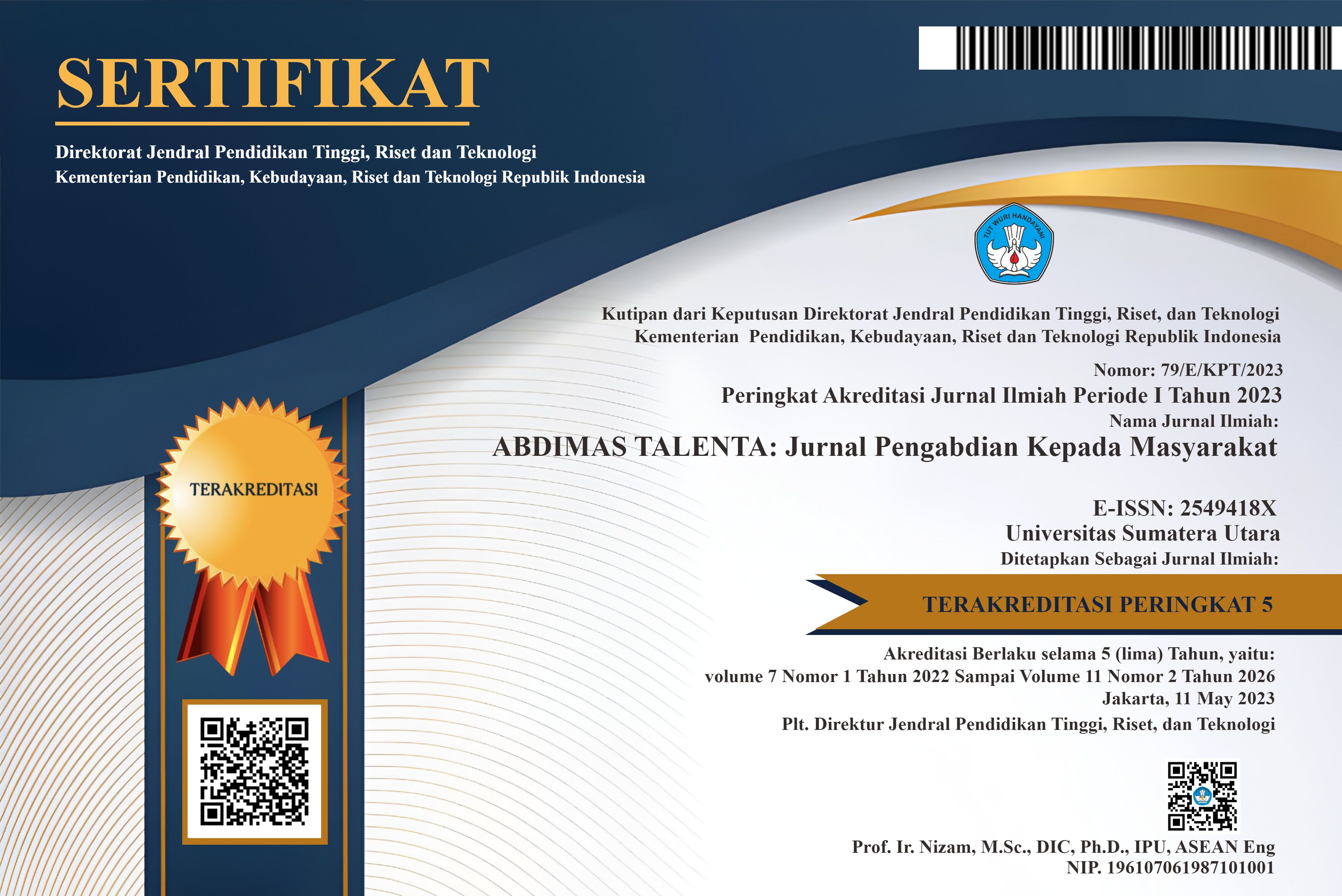Industry and Plantation Collaboration: The Production of Chemical Fertilizer at CV Tabita Jaya and Its Chemical Compositions
DOI:
https://doi.org/10.32734/abdimastalenta.v10i1.21317Keywords:
NPK Fertilizer, N-Total, P2O5, K2O, Moisture ContentAbstract
This study aimed to formulate and evaluate an NPK compound fertilizer with a target ratio of 10:6:20 to enhance green mustard (Brassica juncea) productivity. At CV Tabita Jaya, standardized production methods were used to prepare the fertilizer by mixing Urea, triple superphosphate, and potassium chloride, with analytical confirmation of the nutrient content. Results showed nitrogen (N) content of 10.8%, phosphorus (P₂O₅) at 6.5%, and potassium (K₂O) at 20.8%, closely aligning with the target formulation. Moisture content was low at 2.48%, ensuring product stability and ease of application. Analytical techniques employed included Kjeldahl titrimetry for nitrogen, molybdate-vanadate spectrophotometry for phosphorus, and flame photometry for potassium. These methods demonstrated high reliability, with parameters such as repeatability, reproducibility, and recovery meeting international standards. The fertilizer is expected to support green mustard growth by enhancing critical metrics, including plant height, leaf number, and biomass accumulation. The study highlights the agronomic benefits of balanced NPK fertilization for green mustard, emphasizing enhanced nutrient absorption and sustainable agricultural practices. Furthermore, integrating this fertilizer with organic amendments may help mitigate potential soil degradation associated with prolonged use of inorganic fertilizers. The findings highlight the potential of precision-formulated fertilizers to enhance crop productivity while promoting environmental sustainability.
Downloads
Downloads
Published
Issue
Section
License
Copyright (c) 2025 ABDIMAS TALENTA: Jurnal Pengabdian Kepada Masyarakat

This work is licensed under a Creative Commons Attribution-ShareAlike 4.0 International License.
The Authors submitting a manuscript do so on the understanding that if accepted for publication, copyright of the article shall be assigned to Jurnal Abdimas TALENTA as well as TALENTA Publisher Universitas Sumatera Utara as the publisher of the journal.
Copyright encompasses exclusive rights to reproduce and deliver the article in all forms and media. The reproduction of any part of this journal, its storage in databases and its transmission by any form or media, will be allowed only with written permission from Jurnal Abdimas TALENTA.
The Copyright Transfer Form can be downloaded here.
The copyright form should be signed originally and sent to the Editorial Office in the form of original mail or scanned document.












